Gwalia Ghost Town: Everything you need to know
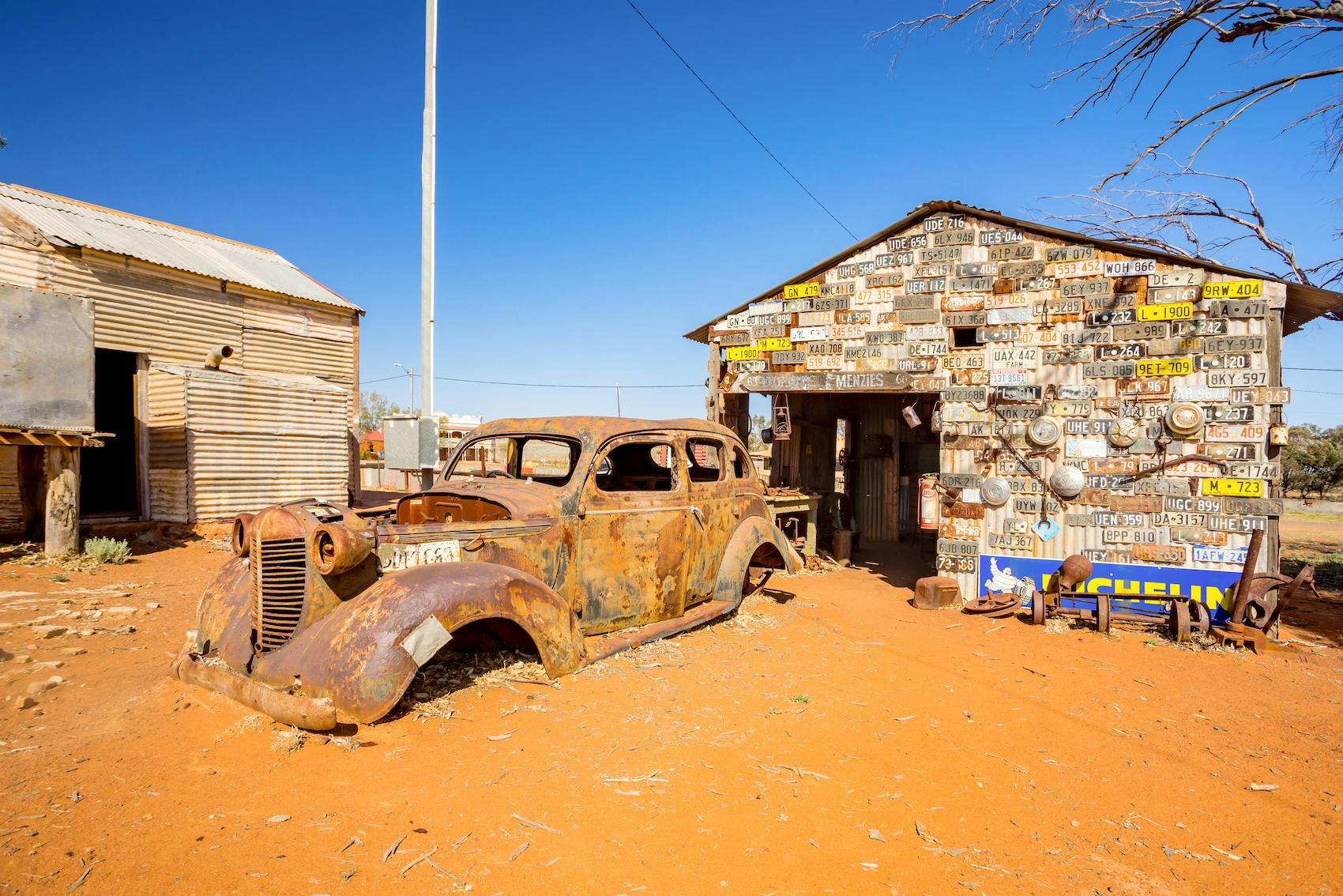
We don’t know about you, but as autumn draws ever closer, it feels like the perfect time to leave the beach behind and head out bush in search of peace and quiet, epic night skies (hello, Milkyway season!) and maybe even a ghost or two.
Words and photos by Cassie Wilkins.
So, throw a bag in the car, fill up the esky, load up the classic driving jam playlists and hit the open road – it’s time to go on an epic adventure to WA’s spookiest ghost town.
What is it?
Nine hours northeast of Perth, Gwalia ghost town is one of the few boom-and-bust towns of WA’s Gold Rush era not lost to the sands of time – or the red dusty sands of the Goldfields. Still filled with the long-abandoned belongings of their previous inhabitants, Gwalia’s ramshackle buildings provide a fascinating window into ye (g)olden times and a great backdrop for a ghost story or two.
From riches to rags
A tiny speck on the edge of the Great Victoria Desert, it’s hard to believe that this spot – where three prospectors randomly struck lucky in 1896 – would go on to become one of the most profitable gold mines in Australia’s history. Yet, while the mine trundles on deep below the surface (it reopened in 1983 after a 20-year hiatus), the same can’t be said for the thriving town that once fuelled it.
Shaped from repurposed old timber and corrugated iron sheets, the town of Gwalia sprung up from the red dirt surrounding the goldmine like wildflowers after the rain. Home to 1200 people – including future-US president Herbert Hoover – its patchwork streets were soon filled with shops, houses, a school, church and a community centre, along with the impressive Gwalia State Hotel, a stylish brick building that was the place to be seen on an evening or a weekend.
But, in a story that was repeated across the region time and time again, all that changed on the night of December 27th, 1963, when the mine suddenly closed. By the next morning, Gwalia was all but a ghost town, its residents gone like seeds scattered to the wind.
A place stuck in time
Recognising the cultural and historical value of Gwalia, a few remaining locals commandeered the old mine offices and banded together to help protect it from otherwise certain destruction – a fate known as ‘gazetting’, which befell many less-fortunate towns.
Their heroic efforts culminated in the opening of Gwalia Museum in 1972 and many restoration and preservation efforts, including relocating a handful of cottages away from the path of the growing pit. Yet, as the rest of the town was looking even more decrepit than usual after laying empty for over 30 years, they pulled out all the stops to celebrate Gwalia’s centenary in 1996, with a ‘cottage’ auction, where Goldfields locals and lovers alike bid for the right to restore the old buildings to their former glory. And the rest, as they say, is history.
Now a great tourist attraction managed by Leonora Shire, Gwalia and its townfolks’ stories live on as a true testament to the importance and value of community and the amazing feats we can achieve when we work together.
Where is it?
Gwalia lies in the Goldfields, 828 km northeast of Perth, 237 km north of Kalgoorlie and 4 km south of Leonora. A world away from the days-long camel trips of times gone past, it takes around nine hours to get to Gwalia from Perth and 2.5 hours from Kalgoorlie, although there are plenty of other sites on the way, so you’re best off giving yourself a good few days to explore.
Those running short on time can also hop on a quick flight or nab a seat on The Prospector to Kalgoorlie (the train journey takes around five hours), then rent a car and drive up from there.
If you feel like a real Goldfields adventure, you can also follow the Golden Pipeline Heritage Trail from Perth to Kal and the Golden Quest Discovery Trail to Gwalia, before making a loop home via Paynes Find.
What to do?
Aside from searching out ghosts, there’s plenty to keep you busy. Sitting on a hill overlooking the townsite, Gwalia Museum is a great place to start. Open from 9 am to 4 pm every day, it covers the history of the mine, the town and townspeople, along with the steam trains and trams that once connected it to the rest of the world.
Next to the museum is the Hoover House B&B – named for yup, you guessed it, ol’ Herbie himself, who was Gwalia’s first mine manager right back when it all began. Though he never actually lived in the house itself, he’s said to have stayed there when he came back to visit, so if walking in his shoes – or sleeping in his room – sounds like your kinda deal (or you just want to stay in a legitimate ghost town), then you can always spend a night in this vintage ‘30s-inspired B&B. Overlooking the pit (which is much more scenic than it sounds), Hoover House also has a great little cafe where you can grab a Devonshire tea or a coffee on the terrace.
You’ll want to factor in a few hours to explore the old town itself, where you can wander freely through the ramshackle metal and hessian-sack-wallpapered houses that still look as if their long-gone residents are about to walk back through the door and pick life up exactly where they left off. You can also peek through the windows of the old stores and visit the old workshops, where once-loved cars rust away under the outback sun.
If you want to crank the creepy up a notch, the hospital is the place to go. While the houses are pretty spooky in an old-timey sort of way – with abandoned teddies lying on unmade beds and never-to-be-finished books on nightstands – and the old piano in the community room feels pretty weird, there’s just something extra creepy about the little medical room with its holey-walls and the old creaky hospital bed under the window. If there really are ghosts here, we reckon this would be the spot.
Nearby places of interest
Looping through the northern Goldfields from Kal, Gwalia is a highlight of the Golden Quest Discovery Trail. Other nearby highlights include Malcolm Dam, Niagara Dam and the living ghost town, Kookynie – whose outback pub, the Kookynie Grand Hotel, probably takes the biscuit as the quirkiest in WA, with a resident horse and toilets filled with frogs (though maybe we just got lucky on the day we visited!) Very different to Gwalia, Kookynie’s vibe is more apocalyptic than ghostly, with old skeletal cars meeting their forever homes alongside half-demolished buildings in a flat, dusty landscape.
Another must-see spot is Lake Ballard on Wongatha country just outside Menzies. A sacred place in the Seven Sisters dreaming stories, the scenery here is out of this world, with Anthony Gormley’s huge art installation – 51 giant human-esque statues dotted across the salty surface of the lake – just adding to the mystique.
Other sights on the route include Coolgardie cemetery with its Afghan cameleer graves, Kunanalling, Broad Arrow Tavern, Ora Banda, Siberia – which is far hotter than its namesake, but just as desolate, with little remaining beyond the cemetery – and Goongarrie, along with many other townsites that met far less fortunate ends than Gwalia.
If you want to do the full loop, there are plenty of accommodation options along the way including Gwalia, Leonora and Kookynie – though our favourite has to be the leave-no-trace campsite at Lake Ballard, which is arguably even more spectacular under the stars than it is during the day.
Note: while the main roads are sealed, most of the smaller ones – including Menzies to Lake Ballard – are not. While the corrugations can be pretty rough, they should be fine with 2WD, though you need to be extra careful in the wet.
Photos
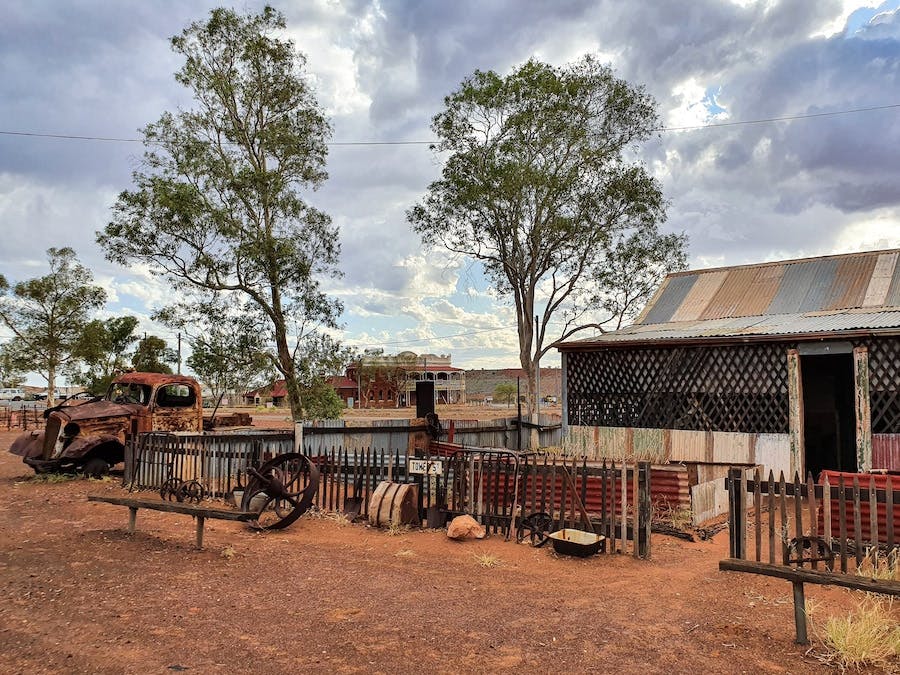
Gwalia’s patchwork streets are a reminder of days gone by.
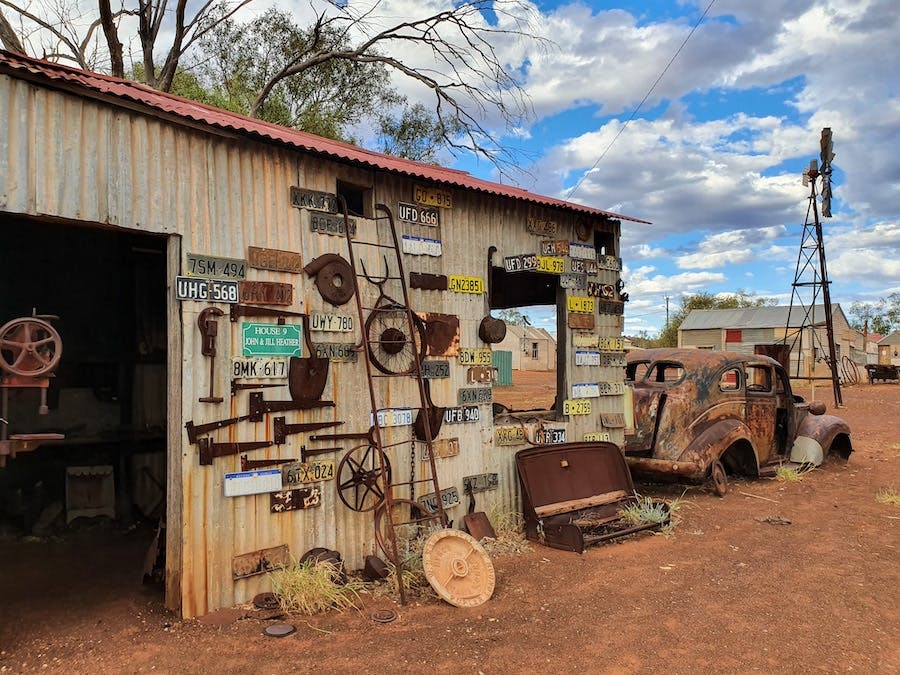
This old workshop might have some new additions on the wall, but it hasn’t seen any real action for 60 years.
Subscribe to our free newsletter!
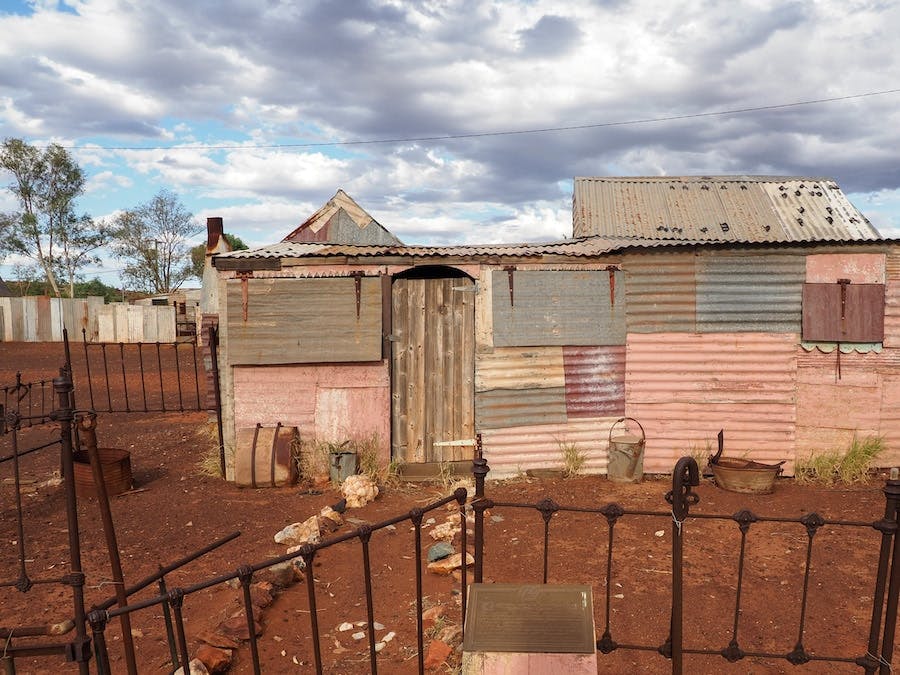
Little Pink Camp and its old gate made of bedframes is an example of the thrifty ingenuity and upcycling design skills of Gwalia’s former residents.
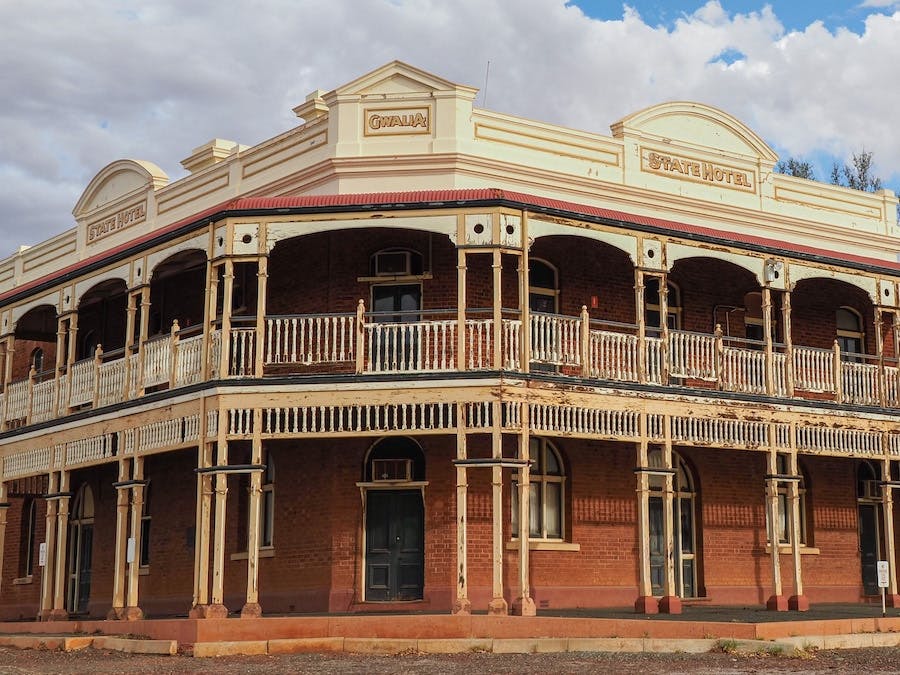
Once the place to be seen, Gwalia State Hotel closed its doors in early 1964. It is now privately owned and not open to the public.
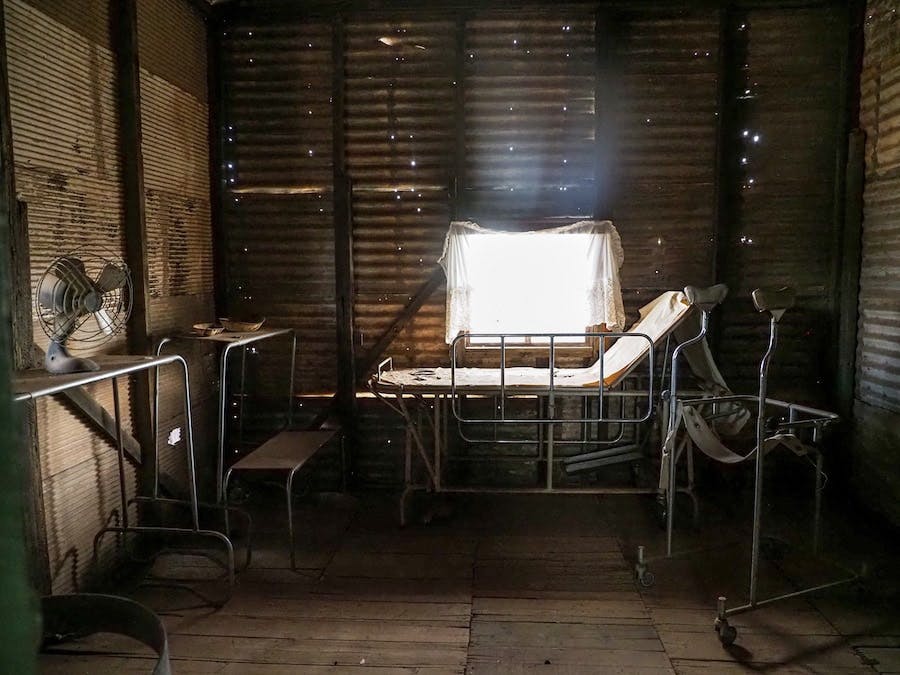
If any one room in Gwalia Ghost Town actually has ghosts, it’s sure to be this one. You can just tell those walls have seen some things.
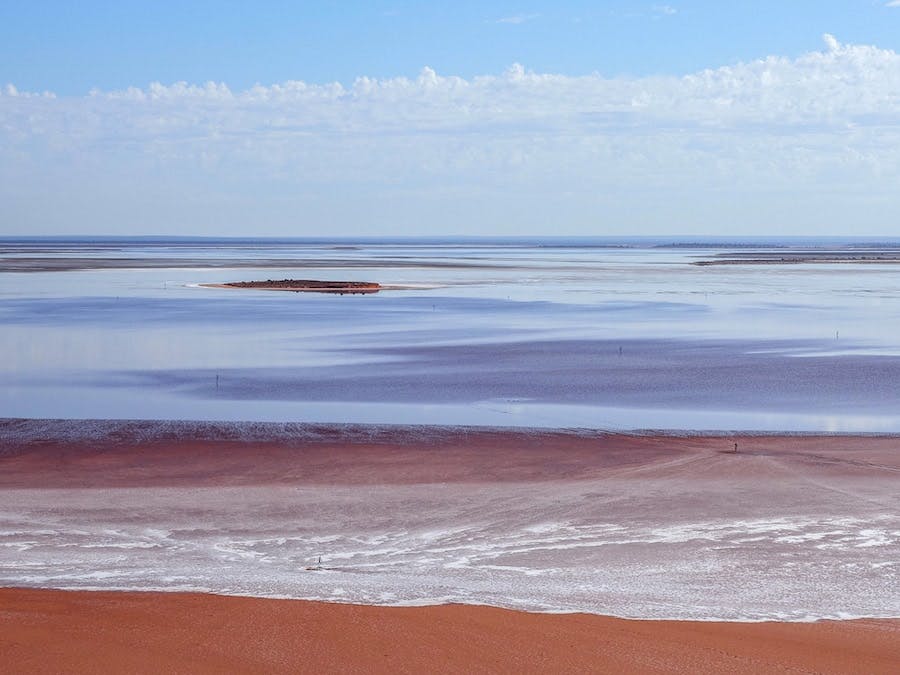
Lake Ballard is Australia’s largest open-air art gallery, with the surface of the huge salt lake dotted with human-esque statues.
Image Credit: Cassie Wilkins